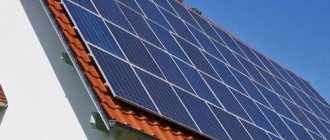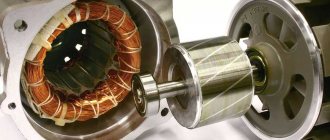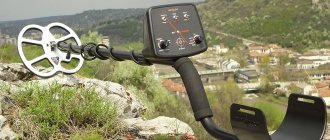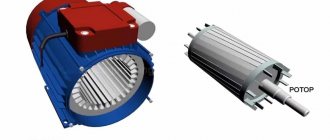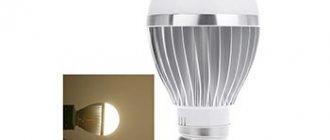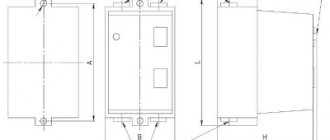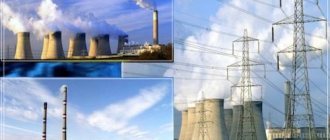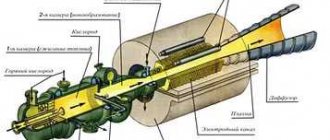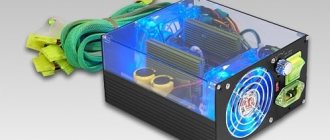The energy industry copes with its task quite confidently, but the scale of our country is such that it is not yet possible to fully provide electricity to all remote or hard-to-reach areas. This is due to many factors that are too expensive or technically unattainable to overcome under current conditions.
Therefore, more and more attention has to be paid to alternative sources that can meet the needs of backward regions without the participation of backbone networks. A promising direction is wind energy, which uses a free source of energy - the power of the wind.
Design and types of wind power plants
Wind power plants (WPPs) use wind energy to generate electricity. Large stations consist of many wind generators, united into a single network and powering large areas - towns, cities, regions. Smaller ones are capable of providing small residential areas or individual houses. Stations are classified according to various criteria, for example, by functionality:
- mobile,
- stationary.
By location:
- coastal
- offshore
- ground
- floating.
By type of construction:
- rotary,
- vane.
Vane stations are the most widespread in the world. They are highly efficient and capable of producing large enough amounts of electricity to supply consumers throughout the entire energy industry. At the same time, the distribution of such stations has a specific configuration and is not found everywhere.
Features of choice
The main criterion that buyers follow is the size of the wind turbine. The larger its size, the higher the power generated. Therefore, when choosing wind power plants for your home, you need to calculate your monthly energy consumption in advance. The result obtained is multiplied by 12 months.
Further calculations for a private house are carried out using the formula: AEO = 1.64 x D x D x V x V x V, in which AEO is the electricity consumed per year, D is the rotor diameter in meters, V is the average annual wind speed in m/s . By substituting the required values, you can easily calculate the dimensions of the required installation.
When purchasing a power plant, you should think in advance about its location. In this case, the following factors are taken into account:
- The area near the generator must be free of buildings, structures, trees and other factors that reduce the productivity of the installation. The existing interference is located at a distance of no closer than 200 meters from the installation site.
- The height of the structure for mounting the generator must be at least 2-3 meters higher than the interference in the adjacent area.
- The distance from residential buildings is at least 30-40 m, since when the blades rotate, some noise is created, causing some discomfort to others.
- It is necessary to take into account the average annual changes in weather conditions, when different amounts of electricity will be generated in the same place during the year.
Principle of operation
As already mentioned, wind farms have a rotor or vane design. Rotary stations, as a rule, have devices with a vertical axis of rotation. They are in many ways more convenient than winged ones, since they do not make much noise during operation and do not require installation in the direction of the wind. At the same time, rotor designs are less efficient and can be used at small private stations.
Wing devices are capable of producing maximum effect. They use the resulting energy much more efficiently than rotary samples, but require correct orientation in relation to the flow, which means the presence of additional devices or equipment.
All types operate on the same principle - the wind flow spins the moving part, which transmits rotation to the generator, as a result of which an electric current is formed in the system. It charges the batteries, which power inverters that convert the resulting current into a standard voltage and frequency suitable for consumer devices.
To supply a large number of consumers, individual wind generators are connected into a system, forming stations - wind farms.
A windmill for a private home is money down the drain. The whole breakdown by numbers in rubles and kilowatts
The issue of wind energy in our innovative times is of interest to many people. Those who have ever visited European countries by car have probably seen huge wind farms. Hundreds of generators are found along the way.
Observing this picture, many begin to believe that generating electricity using wind is a very promising and profitable activity. Wise Europeans cannot make mistakes.
At the same time, for some reason the fact is ignored that in other places in Europe there are practically no such wind power plants.
Why did it happen? This is exactly what this article will discuss, when, where and how it is profitable to use wind turbines and when it is not.
Surely, after the next increase in the price of electricity, you have thought about installing a wind generator on your site. Thus, providing, if not all, then most of your electricity needs.
Some are even thinking about becoming independent from power grids in this way. How realistic and possible is this? Unfortunately, for 90% of private home owners, these dreams will remain dreams. And so that you don’t waste your money, we’ll tell you, laying out all the numbers, why this is exactly so.
Unfortunately, there are not many regions in our country where the wind speed is at least 5-7 meters per second. The data is taken on average per year. In the vast majority of latitudes suitable for habitation, this same speed is a maximum of 2-4 m/s.
This means that your wind turbine will simply not work most of the time. For stable generation of electricity, it needs a wind of about 10 m/s.
In fact, in an hour, a 2kW generator will give you no more than 100W.
You will also encounter another wind problem that manufacturers are silent about. Near the ground, its speed is much lower than at the top, where industrial installations with a height of 25-30m are installed.
You will install your unit at a maximum of ten meters. Therefore, do not even rely on wind tables from different sites. This data is not suitable for you.
Manufacturers modestly keep silent about the fact that for their wind resource maps, measurements are made at an altitude of 50 to 70 meters! In addition, data on turbulence and eddies are not taken into account.
If you try to raise it higher than 10m, you will definitely think about lightning protection. Blades electrified by air friction, a very tasty bait for discharges!
In addition, for some reason everyone only worries about such a parameter as wind speed, and at the same time forgets about its density or pressure. And the difference for energy is quite significant. The dependence of electricity generation on wind pressure is disproportionate.
In addition, there is a certain deceit in the specified technical characteristics of the generators.
Of course, you can trust them, but only under ideal conditions. Because:
- These readings are taken in a wind tunnel
- and in laminar flow with constant direction and increased density
At your dacha, the wind speed may be such that you won’t even be able to turn the shaft, let alone generate energy.
And this is in spring or autumn. It is during this period that the most active movements of air masses occur.
Do not forget that the windmill does not operate in idle mode, but must spin the generator rotor surrounded by neodymium magnets.
And this is only as long as the electrical potential of the windmill is lower than the battery voltage. When the voltage is sufficient to begin charging, the battery turns into a load.
If you use low-speed designs with a vertical axis of rotation, then there is already a step-up gearbox. Have you tried to spin up the boost gearbox? This design becomes more complicated, increasing weight, windage, and cost.
Even at the lighthouses of the Northern Fleet, given the constant winds and polar night, experts prefer to use solar panels. When asked why this is so, the answer is simple – there are fewer problems!
Large industrial wind turbines can transmit energy directly to the grid, bypassing any batteries.
But you won’t be able to do without them. Without a battery, neither the TV nor the refrigerator will work. Even the lighting will shine in fits and starts, depending on gusts of wind.
Moreover, over 12-15 years of operation of the generator, you will be required to change 3-4 sets of batteries, thereby doubling your initial costs. Moreover, we take almost the ideal option, when the batteries will be discharged no more than half of their capacity.
Of course, you can buy cheap battery models, but this will not reduce your costs. Just going to the store for new batteries will be done not 4 times, but 8 times.
Another thing worth seriously thinking about is the availability of free space. Moreover, in area it can extend 100 meters or more in each direction from the mast.
The wind should move freely along the blades and reach them from all sides without interference. It turns out that you must live either in the steppe or near the sea (preferably directly on its shore).
The ideal location would be on top of a hill. Where, from an aerodynamics perspective, the air flow is compressed with a corresponding increase in wind speed and pressure.
Forget about your neighbors nearby. Their gardens and two-three-story mansions will “drink your blood” great, blocking the tailwind every time. As well as neighboring forest plantations.
The same industrial windmills are not placed directly next to each other, but are mounted diagonally. Each subsequent one should not cover the previous one.
4th reason – high price. Don't be fooled by sellers' prices on price lists. They never show the actual cost of all the equipment needed. Therefore, always multiply prices by 2, even when choosing so-called ready-made kits.
But that's not all. Don't forget about operating costs, reaching up to 70% of the cost of wind turbines. Try to repair the generator at height, or dismantle and disassemble and reassemble the mast each time.
Don't forget to periodically replace the battery. Therefore, do not expect that a windmill can cost you 1 dollar per 1 kW of electricity.
When you calculate all the real costs, it turns out that every kilowatt of power from such a wind generator cost you at least 5 bucks.
The fifth reason is inextricably linked with the first four. This is the payback period.
The cost of a windmill, mast and additional equipment for 2-kilowatt high-quality models will reach an average of 200 thousand rubles. The productivity of such installations is from 100 to 200 kW per month, no more. And this is in good weather conditions.
Even precipitation reduces the power of wind turbines. Rain by 20%, snow by 30%.
So your entire savings turns out to be 500 rubles. In 12 months of continuous work, a little more will accumulate – 6 thousand.
And all this without taking into account operating costs. And if you estimate that the average service life of a good windmill is about 20 years, then it turns out that it will completely and irreparably break down even before it reaches its payback period.
At the same time, a 2-kilowatt unit will not cover 100% of your needs. Maximum by a third! If you want to connect everything entirely from it, then take a 10-kilowatt model, no less. This will not change the payback period.
But here there will be completely different dimensions and weight.
And simply attaching it to a pipe through the attic of your roof will definitely not work.
However, some are still convinced that due to the endless rise in price of electricity, a wind generator will one day become profitable.
Of course, electricity becomes more expensive every year. For example, 10 years ago, its price was 70% lower. Let's make approximate calculations and find out the prospects for the windmill to break even, taking into account the sharp increase in the cost of electricity.
We will consider a 2 kW generator.
As we found out earlier, the cost of such a model is about 200 thousand. But taking into account all the additional expenses, you need to multiply it by two. The result will be at least 400 thousand rubles. costs, with a service life of twenty years.
That is, in a year it turns out to be 20 thousand. In fact, this year the unit will give you a maximum of 900 kW. Due to the coefficient installed capacity (for small wind turbines it does not exceed five percent), in a month you will generate 75 kW.
Even if we take 1000 kW per year for simplicity of calculations, the cost of 1 kW/h obtained from a wind turbine will be 20 rubles for you. Even if we assume that electricity from thermal power plants will rise in price by 4 times, then this will not happen tomorrow, and not even in 5 years.
What conclusions can be drawn from all of the above?
A wind generator in the current Russian conditions is an unprofitable unit.
In order to somehow justify its use, the price of electricity today should already reach 30 rubles per 1 kW.
The use of a windmill can be justified in two cases:
- you do not have external power grids nearby or you are not allowed to connect to them
- you have a diesel generator, but there is no way to supply fuel for it
At the same time, the wind turbine must be installed in an area with an average annual wind speed of at least 5-6 m/s. Only in these cases will a wind turbine be a good alternative.
In fact, in such conditions you are simply forced to choose the least of all evils. At the same time, do not believe in the super-efficiency of other vertical or spherical models assembled with neodymium magnets.
The end result will always be the same. The energy produced by a wind turbine depends only on:
- area that the blades describe
Therefore, if you are already connected to the power grid, do not look for unnecessary adventures and headaches. You will not find any benefit, at least for today.
Well, for those who live far from substations and 0.4 kV overhead lines, it is worth purchasing the most powerful models of wind turbines that you can afford. Since you will get no more than 15% of the power indicated in the pictures.
Another category of consumers, quite rightly, makes a choice not in favor of Chinese factory models, but, on the contrary, prefers homemade windmills from self-taught craftsmen. This also has its benefits.
For the most part, the inventors of such devices are competent and responsible guys. And in almost 100% of cases, you can return the installation to them without any problems if something goes wrong or it needs to be repaired. There will certainly be no problems with this.
Industrial Chinese windmills have a prettier appearance, of course. And if you still decide to buy it, immediately after checking it with an electric drill, do preventative repairs and replace Chinese scrap metal with bearings with high-quality lubricant.
If you have large bird nesting areas nearby, it wouldn't hurt to purchase an extra set of blades.
Chicks sometimes get caught in the spinning “mini mill”. Plastic blades break and metal blades bend.
And I would like to end with wisdom from those users who did not listen to all the arguments and came face to face with all the problems described above. Remember, the most expensive weather vane for a home is a wind generator!
Advantages and disadvantages of wind power plants
The advantages of wind farms include:
- independence from fossil resources;
- An absolutely free energy source is used;
- environmentally friendly method - no harm is caused to the environment.
At the same time, there are also disadvantages:
- the unevenness of the wind creates certain difficulties in generating energy and forces the use of a large number; batteries;
- windmills make noise when operating;
- The efficiency of wind power plants is low and it is very difficult to increase it;
- the cost of equipment and, accordingly, electricity is much higher than the price of network electricity;
- The payback on equipment decreases significantly as its capacity increases. The most productive stations do not fully pay for themselves.
The use of small stations can provide energy to a limited number of consumers, so large devices are required for large settlements or regions. At the same time, high-power wind turbines require appropriate wind flows and uniformity of its movement, which is not typical for the conditions of our country. This is the main reason for the low prevalence of wind turbines compared to European countries.
How it all began
There is a common misconception that wind energy originated only in the 17th–19th centuries. However, in fact, wind as a source of energy was actively used by representatives of ancient civilizations. Here are some eloquent examples from history:
- Already in the 3rd–2nd centuries BC. e. Mesopotamians invented the first prototypes of windmills for grinding grain. The blades of such devices, rotating under the influence of the wind, set a massive millstone in motion. He, in turn, ground the grain into flour. Thus, wind energy saved the energy and time of several hundred workers.
- In Ancient Egypt, windmills appeared around the same period.
- In Ancient China, wind was used to pump water from rice fields.
- In the 12th century, technologies based on the use of air flows began to spread throughout Europe.
For a long time, wind energy could not boast of good results. It made a person’s life and work a little easier, but could not serve the benefit of all mankind.
It was only in the 20th century that technological progress touched this industry. Scientists began to develop equipment that allows them to convert the energy of air flows into electricity.
Economic justification for the construction of a wind farm
From an economic point of view, the construction of a wind farm makes sense only in the absence of other methods of energy supply. The equipment is very expensive, maintenance and repair require constant costs, and the service life is limited to 20 years, and this is in European conditions. For Russia, this period can be reduced by no less than a third. Therefore, the use of wind power plants is economically ineffective.
On the other hand, in the complete absence of alternative options or in the presence of optimal conditions that ensure high-quality and uniform operation of wind turbines, the use of wind farms becomes a completely acceptable way to supply energy.
Important! We are talking specifically about large stations that supply entire regions. The situation with household or private stations looks more attractive.
Capacity of industrial stations
Industrial wind farms have very high power, capable of supplying large settlements or regions. For example, the Gansu wind farm in China has 7965 MW, Enercon E-126 produces 7.58 MW , and this is not the limit.
It should be noted right away that we are talking about leaders in wind energy; other models produce much less energy. However, when combined into large stations, wind turbines are capable of producing quite a sufficient amount of electricity. The combined complexes generate a total power of 400-500 MW, which can easily be compared with the productivity of hydroelectric power stations.
Small stations have more modest indicators and can only be considered as point sources that supply a limited number of consumers.
Cons of wind energy
Meanwhile, wind energy has several disadvantages. So far there are as many of them as there are advantages.
- High noise (it affects fauna and even humans).
- Birds get caught in generator blades.
- There are few places where this power is used to power an enterprise (in central networks it is an additional branch of the circuit; it is autonomously used only for domestic purposes or in agriculture).
- Aviation has proven that icy blades reduce rotation efficiency.
Geography of application
Wind energy is most widespread on the west coast of the Atlantic, in particular in Germany. There are the best conditions - smooth and strong winds, optimal climatic indicators. But the main reason for the widespread use of wind power plants in this region was the lack of opportunities for the construction of hydroelectric power plants, which forced the governments of the countries in this region to use available methods of generating electricity. At the same time, there are installations in the Baltic region, Denmark, and Holland.
Russia is still lagging behind in this matter; over the past decade, barely a dozen wind farms have been commissioned. The reason for this lag lies in the great development of hydropower and the lack of proper conditions for the operation of industrial wind power stations. However, there is an increase in the production of small installations capable of providing energy to individual estates.
Advantages
Wind energy has a number of significant advantages, such as:
- Public availability. Wind is a renewable raw material. It will exist as long as the sun exists.
- Safety for nature and people. Like all alternative energy sources, wind is environmentally friendly. Equipment that converts wind energy does not create emissions into the atmosphere and is not a source of harmful radiation. Ways to accumulate, transmit and use wind energy are environmentally friendly. Production equipment is safe for humans as long as they use it for its intended purpose, while observing all safety rules.
- Successful competitiveness. Wind energy is a good alternative to nuclear energy. These industries are vying for supremacy in renewable energy. But nuclear power plants pose a serious threat to humanity. At the same time, not a single case of malfunction of a wind energy complex, accompanied by mass mortality of workers and ordinary residents, has yet been recorded.
- Providing people with a large number of jobs. Statistics show that already in 2015 the industry serves 1 million people. The development of wind energy is still ongoing, so this sector of the national economy annually provides thousands of jobs to people around the world. This increases the percentage of employment of the population and has a beneficial effect on the economy of a particular region, the entire country and the whole world.
- Ease of operation and management. The equipment requires only periodic maintenance. Repairing turbines or replacing them is a task of medium complexity. Well-trained specialists easily ensure the operation of wind generators and their serviceability. This requires only basic skills.
- Prospects: Wind energy is only halfway through its journey. The potential of this industry is not 100% revealed, which means there is still more to come. Modern scientific and technical discoveries will improve the efficiency of wind energy and make it more profitable.
- Economic benefit. Any enterprise at the beginning of its work requires large investments. And in the wind energy industry, equipment costs are stable while electricity prices are increasing. Consequently, production income is constantly growing.
All these characteristics contribute to the development and globalization of wind energy.
Facts and Misconceptions
The low prevalence of wind power plants and the lack of experience with them have given rise to a lot of misconceptions regarding the properties and impact of wind power plants on the human body. Thus, there is a widespread belief that the noise level produced by an operating wind generator is unusually high. Indeed, there is some noise, but its level is much lower than is commonly believed. Thus, the noise from industrial models at a distance of 200-300 m is perceived by ear in the same way as the sound from a working household refrigerator.
Another problem that is unreasonably exaggerated by ignorant people is the creation of insurmountable interference with radio and television signals. This issue was resolved before users knew about it - every powerful industrial windmill is equipped with a high-quality radio interference filter that can completely eliminate the device’s influence on the airwaves.
People living near turbines will constantly be in the shadow flickering zone. This is a term that refers to the uncomfortable sensation of flashing light displays. Rotating blades create this effect, but its significance is greatly exaggerated. Even the most sensitive people can always simply turn away from a turbine if they happen to be close to it.
There are other, far-fetched and quite real facts regarding the operation of wind farms, their impact on the human body and the surrounding nature. Some of them are ordinary rumors, others are so exaggerated that they do not even deserve discussion. Wind energy is a full-fledged industry capable of solving energy supply issues both on a large scale and within the confines of a small country house.
False theories
Opponents of wind energy come up with various false theories:
- The noise created by wind generators harms the ecosystem. Wind stations do indeed make noise, but at a distance of 30–40 meters it is already perceived as background (natural noise level), so it does not cause any damage to the environment.
- Wind turbines kill birds. Yes, this is true. However, just as many birds die from wind farms as from high-voltage networks and cars.
- Near wind farms, the TV signal deteriorates. The equipment does not in any way affect the quality of the satellite, digital and analogue TV signal.
The main goal of such inventions is to attract more people to the side of traditional energy, which is more profitable for modern entrepreneurs.
Private wind farms
For Russia, the most pressing issue is the distribution of small stations that supply one house or estate. The construction of large wind farms in the climatic conditions of our country is impractical and unprofitable. The greatest value of wind turbines lies in the ability to provide energy to backward or remote communities where there is no grid connection.
For such areas, the use of small private stations is the best way to solve the problem, since the operation of a wind turbine does not require the provision of fuel, the device is simple and can be easily repaired. Providing such regions with additional equipment is much easier and cheaper than allocating large amounts of money for power transmission lines, especially when it comes to mountainous areas. Small wind turbines can generate a sufficient amount of energy without the need for maintenance or fuel costs, making them a very promising and attractive solution to the problem.
How to make your own wind generator
The answer to this question lies in the level of human training in theoretical or technical terms. The usual workflow is approximately as follows:
- creating a project
- product of all available calculations
- preparation of materials
- purchasing system elements that cannot be made independently (for example, batteries)
- manufacturing of rotating parts (rotor)
- installing the rotor, checking performance, making the necessary design changes
- assembly of the generator (if you plan to assemble it yourself, rather than using ready-made samples)
- connecting the entire system into a complex, test run
- system setup, adjustment work
- exploitation
Useful video
The order of work is determined conditionally; each specific case has its own conditions or possibilities. Some users do without equipment, connecting consumption devices directly to the generator. Not all devices or appliances allow you to do this, but, for example, heating elements can be turned on this way. This is done if there is no additional equipment yet, but you already need to heat the water. In addition, it is necessary that the wind speed be more or less constant and even.
Review of prices for popular models
The cost of wind generators is high. This moment is the most difficult to overcome for the spread of wind energy technologies. Many home owners would love to install wind turbines on their property, but do not have the funds to purchase them. An installation capable of providing lighting to an area costs about 100 thousand rubles.
A more powerful design that allows you to supply electricity to a cottage will cost 250 thousand.
A wind farm capable of supporting a small farm costs about 500 thousand rubles. And this is not the limit. At such prices, one cannot expect a rapid spread of wind generators, so all hope is for the emergence of domestic models that can solve the issue of high cost of equipment. Alternatively, you can buy a relatively inexpensive Chinese model. Such devices cannot be repaired, being, in fact, disposable, but their price is much lower than the cost of Western models of similar power.
